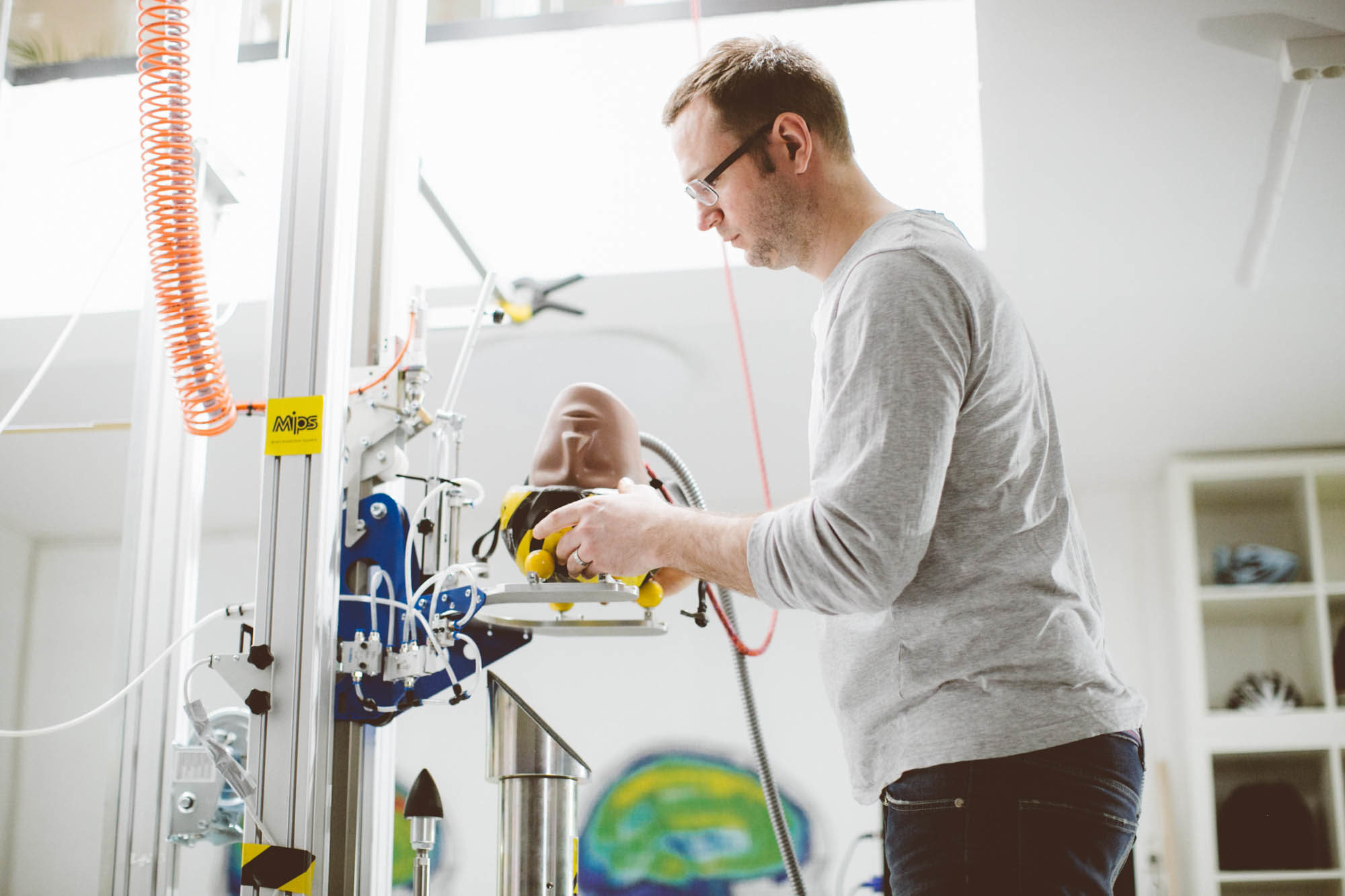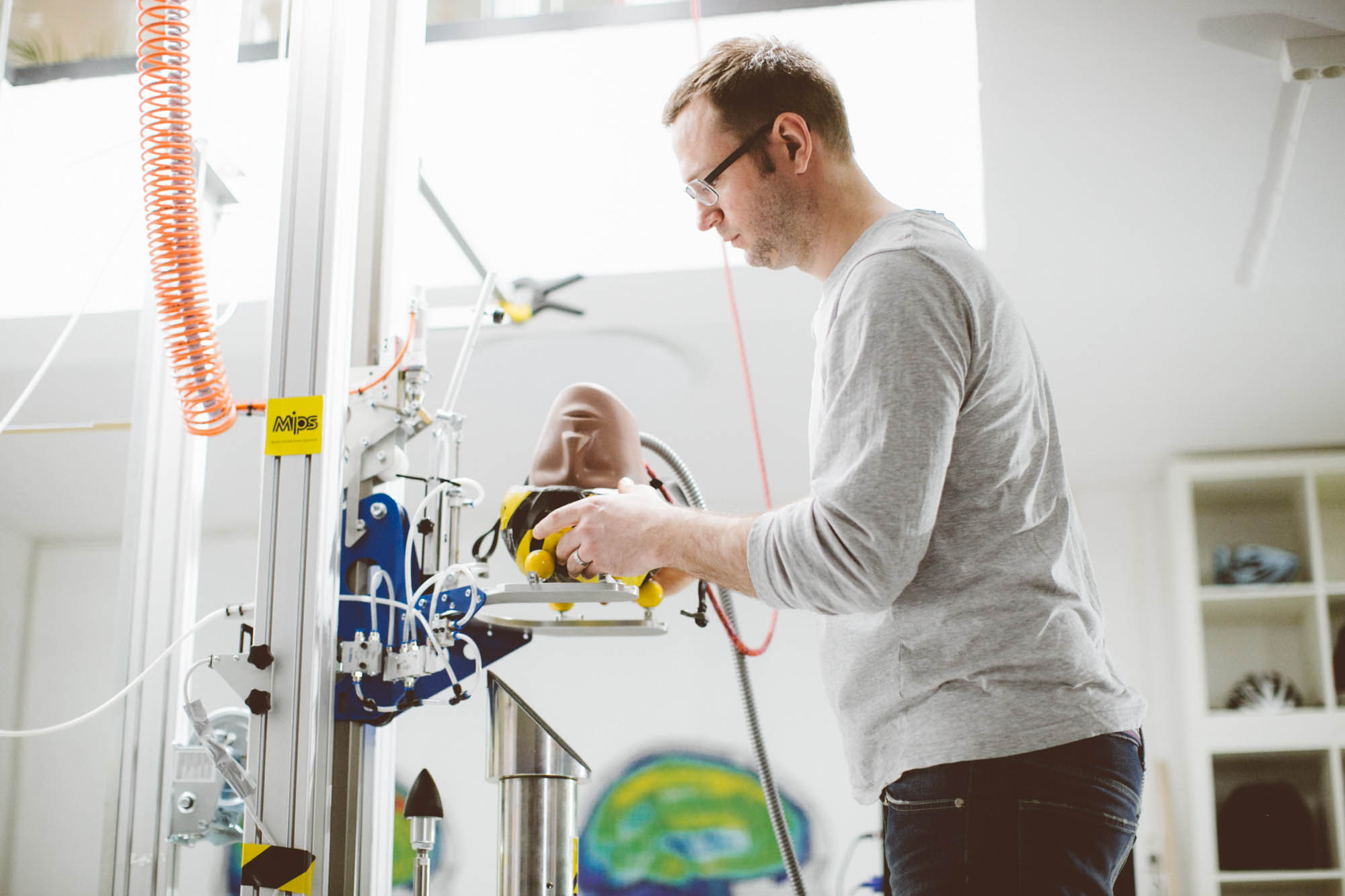MIPS: UNLIMITLESS PROTECTION FOR HELMETS
Helmets are fundamental in motorcycling, cycling, skiing and in all activities where wearing them is the rule. An indispensable companion to never forget when practicing sports. Yet, in many cases, standard protection is insufficient, not ensuring adequate defense for brain injuries due to violent impacts. This is because the current legislation on helmets adequately addresses the protection of the skull, but omits the protection against possible rotational movements, which is not measured in all current official test standards.
This aspect became the cue of the Swedish neurosurgeon Hans von Holst: to study the relationship between brain injury and helmet construction. After more than twenty years of academic research, Professor von Holst, together with Peter Halldin, a researcher at the Swedish Royal Institute of Technology, succeeded in developing a revolutionary technology that significantly improved brain protection in the event of impacts. Their goal was to get a better shelter against the rotary movement, that is, when the head is hit “at an angle” rather than with a direct impact: the most common cause of collision with the head during a fall. An awareness that has shaken the foundations of traditional helmet technology based, up until then, on tests performed with standard simulations where the helmet falls vertically on a flat surface.

The intuition of the Mips (Multi-Directional Impact Protection System) system is simple: facilitating movement between two surfaces in a helmet could reduce rotary motion. From this axiom was developed Mips, a sliding floor system (of 10-15mm) designed to rotate inside the helmet in all directions. In short, a multidirectional impact protection system. This allows to reduce and slow down the amount of energy transferred to the head and the brain in order to reduce the lesions caused by rotatory movements.
When a head impacts angularly and stops suddenly, rotational movement can cause high levels of tension in the brain tissue. The stretch of the tissue caused by these movements can cause various types of brain injury. Mips was designed with the intention of dampening the rotational movement generated by the impact.
A helmet equipped with Mips technology consists of three main components: the shell in expanded polystyrene (EPS), the low-friction layer, and often between the two, a fixing system by means of elastomers. In an angled impact, the fixing system by means of elastomers tends to allow the EPS cap to turn independently around the head. How much does the system move? From 10 to 15 millimeters, but during those crucial milliseconds, they can reduce the amount of rotational movement that can be transferred to the brain. Mips, in fact, uses a sliding floor system that moves inside the helmet, imitating the brain protection system. This layer is designed to rotate inside the helmet in order to slow down and reduce the amount of energy transferred to or from the skull and thus reduce the risk and severity of brain injuries.
Up to date, 80% of the leading brands in the world of helmets have collaborated with Mips for greater protection. “The success behind the increase in the technology of Mips present inside the helmets is due to the continuous attention to the research, development and communication of the dangers of rotary injury. For this reason, the mission of Mips is to make partners and consumers understand the advantages of the Mips system, together with an increase in the general awareness of the dangers of head injuries. This is why we believe Mips has grown tremendously over the past two years” says Johan Theil, Mips CEO.

